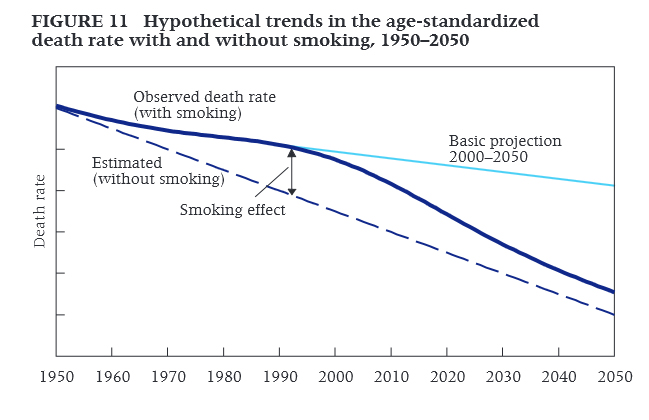
2nd July 2014 Increases in life expectancy are likely to be even greater than current estimates By failing to consider future trends in smoking, most projections for life expectancy in low-mortality nations have been underestimated.
A new study by demographer John Bongaarts – Population Council Vice President and Distinguished Scholar – finds that mortality projections from most low-mortality countries are more pessimistic than they should be. The reason for this flaw is that existing projections fail to recognise that fewer people smoke today than used to. Indeed, less than 5% of the world's population may smoke by the year 2040. As a result, there will be a future decline in smoking-related mortality. This also suggests that with more people living longer, pension and health care costs in coming decades will likely be higher than previously estimated. A country’s future mortality trajectory has important implications for health and social policy, especially in countries with aging populations where pension and health care costs are rising steeply. Developed countries – such as the United States, Japan, and most nations of Europe – often have government agencies that make mortality projections (e.g. Actuaries of the Social Security Administration in the United States) and the UN Population Division makes projections for 238 countries and regions. All current mortality projections foresee substantial increases in future life expectancy. However, Bongaarts finds that the increases in life expectancy are likely to be even greater than current estimates suggest.
Nearly all methods for projecting mortality ignore trends in causes of death. Rather, they rely wholly or in part on the extrapolation of past trends in mortality rates, longevity measures, or mortality models. Bongaarts examined whether mortality projections could be improved by taking into account smoking trends. He focused on trends in death rates and causes of death in 15 countries with high life expectancy and reliable data on causes of death: Australia, Austria, Canada, Denmark, Finland, France, Italy, Japan, the Netherlands, Norway, Spain, Sweden, Switzerland, the United Kingdom, and the United States. Bongaarts studied mortality data gathered between 1955 and 2010. A problem arises because most mortality projection methods ignore the past rise and the likely future decline in smoking-related deaths. “Making explicit adjustments for the distorting effects of smoking is likely to improve the accuracy of projections,” says Bongaarts. It would not be possible to improve mortality projections by making adjustments for other causes of death, he found. Unlike other causes of death, future trends in smoking mortality can be predicted with a high degree of certainty. “Worldwide, we are making notable progress in reducing the number of people who smoke,” he says. “This not only has immediate health benefits, but also long-term public policy implications. To adequately prepare for longer-living older populations, countries must take smoking trends into account.” The study, "Trends in Causes of Death in Low-Mortality Countries: Implications for Mortality Projections," is published in the journal Population and Development Review.
Comments »
|








